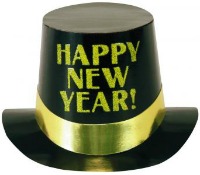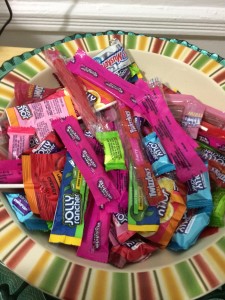There were several things I regularly encountered in the 70’s that were important components of my daily life. Many of them are gone now. Here are just a few.
- Photo booths. If you were feeling bored and silly, you could go to a store like Woolworth’s and for a quarter you could have a series of black and white pictures taken showing you and your friends doing something stupid. Note to readers born after 1995: this was the closest thing we had to Snapchat, but kids today are much smarter because they can make their Snapshot photos disappear in a matter of seconds. People like me end up with friends who find photo booth pictures in the back of their closet and post them on my Facebook page. Today it’s a lot harder to find a photo booth and when you do, it’s generally only used for passport pictures or as a source of nostalgic entertainment at Bar Mitzvahs and Sweet Sixteens.
- Foot X-rays. Up until 1970, mom would take us once a year to the Buster Brown shoe store for new school shoes. The excitement around this outing had nothing to do with getting new shoes and little to do with the free helium balloon you received after your visit. The highlight of the trip was getting a turn at the X-Ray shoe fitter machine. The machine allowed you to see all the bones in your feet while simultaneously getting a healthy dose of radiation. The machine was generally operated by a shoe salesman blowing cigarette smoke in your face while buffing a pair of new Mary Janes with some toxic shoe polish. Our foot x-ray days ended around 1970 when these machines were banned.
- Rotary phones. Dialing a number with a lot of 9’s in it was a bitch, you had to memorize important phone numbers in your head because there was no auto-dial, the long phone cords were always tangled, and if another caller was trying to get through while you were on the line, they were out of luck. If someone tried to call you with an important message and you weren’t home, you were screwed because there was no way to leave a message back then. But on the positive side, at least you always knew where the phone was because it was cemented to the wall. ,
- Arcade games. It used to be that you couldn’t walk into a candy store or newspaper shop without seeing a pinball machine, Pong, Asteroids, or PacMan. Today the only place I ever see arcade games is at the Museum of the Moving Image in Queens with a sign that says, “Do Not Touch.”
- Typewriters. When I was a teenager, I got a typewriter before I went to college. It was considered essential. There was no such thing as a Royal Ultra Book or a Smith Corona Air. There was one weight of typewriter…heavy. Back then, copy and pasting meant copying someone else’s term paper, not moving text around on the computer screen. There was no spell-check which meant students required a lot of white-out, which for many, replaced the mimeograph paper we were all getting buzzed off of back in first grade.
- Records. Part of the fun of listening to music was going to the record store or Alexander’s and leafing through the album covers. The photos, artwork, or images on the covers were often just as exciting as the album itself. Back then, you couldn’t Google the lyrics to your favorite song, so it was always eye-opening when you purchased the album and realized you’d been singing the wrong lyrics.. After months of belting out Simon & Garfunkel’s Sound of Silence singing “silence like a casserole” I finally realized that the duo was singing “silence like a cancer grows.” I still like my version better.
- Toaster ovens. We didn’t have a toaster oven growing up, but I always thought we needed one because everyone else seemed to have one. Apparently no one thinks this anymore, since I never see them anymore, except in my mother’s house because she bought one after I moved out!
- Subway tokens. Long before NYC Metrocards, everyone had to carry around tokens that were usually stuffed all the way at the bottom of your pocket and covered with lint or used tissues when you finally fished them out of your jeans. Despite the inconvenience, I miss subway tokens and I have been known to oogle over the New York Transit Museum store’s kitchy, gaudy, noisy, subway token charm bracelet with genuine tokens from different decades. Note to close friends and family: this would make a great gift for me if you’ve missed Christmas or my birthday.
- Skate keys. Before there were roller blades, kids had skates with keys that were used to adjust the size. Every kid was told to wear their key around their neck so it wouldn’t get lost. By the time I got my first pair of skates, Super Skates were invented which were adjustable without a key but never really gave you a snug fit. Fortunately Super Skates prepared me for the dozens of uncomfortable, impractical shoes I would purchase for decades to come.
- Captain Crunch ice cream bars. This was the best ice cream bar on the planet. I thought it was pure genius to blend a breakfast cereal with ice cream. Was I the only one? How could these gems have ever disappeared? I am still scratching my head.
- Rectal thermometers. Who doesn’t remember the embarrassment and discomfort of having a rectal thermometer shoved up your ass? Today this is reserved for people who are unconscious or for whatever reason can’t seem to use a mouth or ear thermometer, but back in the 70’s if your mother suspected you had a fever, there was no escaping the rectal thermometer.
- Lollipops at the doctor’s office. Sometime between 1980 and 1990, offering lollipops at the doctor’s office fell out of vogue. Ever since my kids started going to the pediatrician’s office, I have tried my best not to roll my eyes at the end of the visit when they are offered stickers. Big whoop. If I’ve just been poked and prodded (and perhaps just had an encounter with a rectal thermometer), I expect some compensation in the form of candy; not a piece of paper with glue.
- TV antennas. Before high definition, we had rabbit ears and snow. TV antennas were used to help make the picture clearer or more stable, get rid of weird zig zag lines on the screen, and eliminate snow, a euphemism for no freaking picture at all. Adjusting the rabbit ears was never an exact science and required a great deal of creativity. Each member of the family would take turns moving the rabbit ears close together and far apart hoping our actions would result in a clearer picture. Getting the rabbit ears in the right position for a clear picture usually required certain sacrifices like holding the antenna in a certain position with one hand, eliminating sudden movements, or suppressing breathing.
- TV test patterns. Before television was 24/7 and five-hour marathons of Law & Order and Hoarders didn’t exist, people used to go to bed no later than 1:30 am, when television programming ended for the evening. After Johnny Carson and the late night movie, a picture of an American flag would come on and the national anthem would be played. After this, all you could watch on TV was a test pattern with colors or more snow.
- Anything with a dial. Before there were remotes, people were forced to get up off their asses and change the channel when they wanted to watch a different television show. The same was true of the radio when you wanted to change the station. My father actually invented the concept for the first remote which was essentially any child in the family who walked past the television while he was watching. He would point a finger at one of us and ask us to change the channel for him, never leaving his chair. We served his purpose and we never ran out of batteries.

